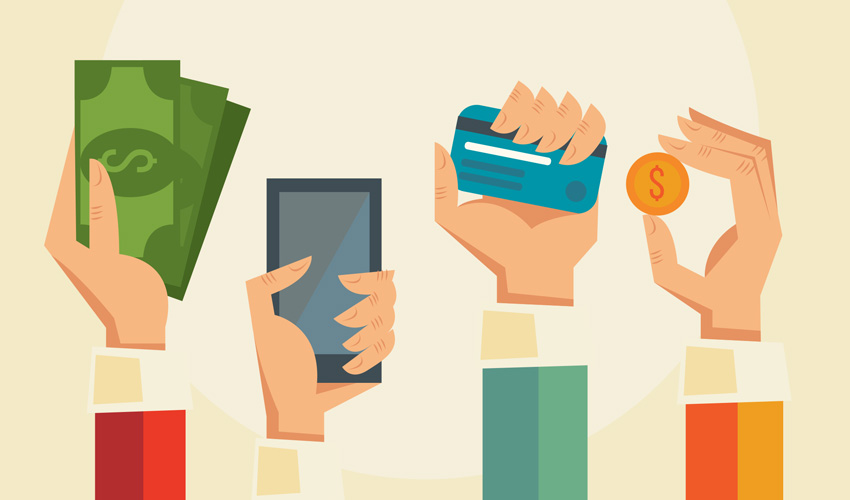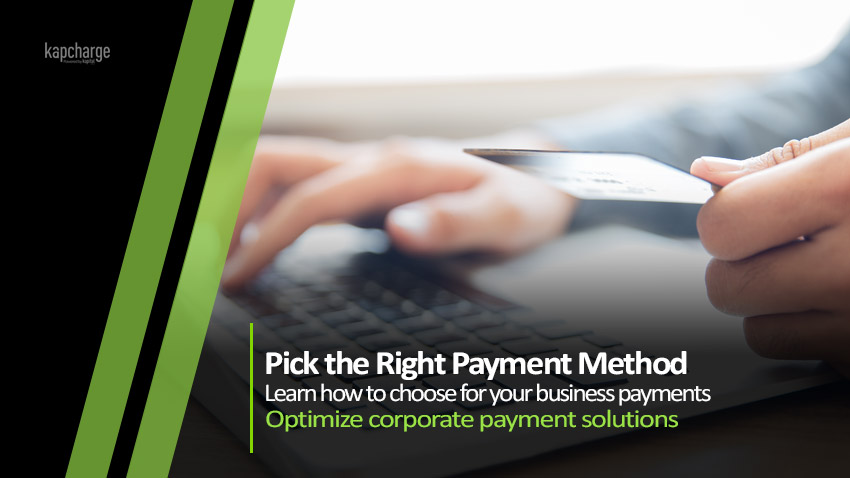
Revolutionized Pre-Authorized Debits for Canadian Businesses
June 11, 2024
Press Release – Kapcharge Streamlines PCI Compliance with Skyflow
November 4, 2024In the dynamic world of finance, a significant shift is underway, revolutionizing how consumers and businesses handle money. The rapid adoption of alternative payment solutions is driving this transformation, moving away from traditional physical cash and card transactions towards more innovative and efficient ways to manage and spend money. That evolution is not just a trend but a fundamental change reshaping the landscape of financial transactions.
Let’s delve into the key drivers of this shift and explore the alternative payment methods gaining traction, especially in the B2B landscape for 2024.
Key Drivers of the Shift to Alternative Payment Methods
1. Rise of Digital Wallets
Digital wallets like Apple Pay, Google Wallet, and PayPal have become increasingly popular. They offer a convenient and secure way to store payment information. These wallets enable users to make payments quickly and effortlessly without carrying physical cards. They also integrate seamlessly with other digital services, enhancing the overall user experience by allowing payments through apps, websites, and even in-store with NFC technology.
2. Value of Payment Data
Businesses recognize the strategic value of payment data, which provides insights into consumer behaviour, spending patterns, and preferences. This data is leveraged to tailor marketing strategies, improve customer experiences, and create personalized offers. Companies can make informed decisions by analyzing payment data, driving the adoption of digital payment methods that facilitate more accessible data collection and analysis.
3. Demand for Transaction Transparency
Modern businesses and consumers demand greater visibility into their transactions. Advanced digital payment solutions provide detailed records, making it easier to track expenses, identify discrepancies, and ensure compliance with financial regulations. That transparency helps build trust between businesses and customers, providing a clear and accessible trail of financial activity.
4. Advanced Bank Account Payment Technologies
Innovations in bank account payment technologies, such as real-time processing and open banking APIs, have made direct bank transfers more efficient and appealing. These technologies allow for faster, more secure transactions, reducing the reliance on traditional payment methods like checks and wire transfers. Open banking, in particular, promotes interoperability and competition within the financial ecosystem, enabling new financial services and products to emerge.
5. Increased Awareness of Payment Security
With the rise in cyber threats, there is heightened awareness and demand for secure payment methods. Technologies like tokenization, which replaces sensitive payment data with unique symbols, and biometric authentication, which uses fingerprint or facial recognition, offer enhanced security features. These methods help prevent fraud and unauthorized access, ensuring that transactions are safe and reliable.
6. Need for Faster Onboarding
Businesses require quicker onboarding processes for payment solutions to streamline operations and improve customer experience. Traditional payment methods often involve lengthy setup and verification processes. In contrast, modern payment methods offer rapid setup and integration, allowing businesses to start accepting payments almost immediately. This speed is crucial in today’s fast-paced business environment.
7. Complexities of the Modern Money Movement
As financial transactions become more complex, businesses and consumers seek payment methods that efficiently handle diverse and intricate money movements. That includes managing multiple currencies, handling cross-border transactions, and integrating with various financial systems. Alternative payment methods are designed to address these complexities, providing seamless and efficient solutions for modern money movement.
Alternative Payment Methods Gaining Traction
In 2024, several alternative payment methods are emerging as significant players in the B2B landscape. Here’s a closer look at these methods:
Electronic Funds Transfer (EFT) or Bank Account Payments (ACH)
EFTs and ACH payments facilitate direct, cost-effective money transfers between bank accounts, offering a reliable alternative to traditional check payments. These methods reduce transaction fees and processing times, making them ideal for businesses looking to streamline their payment processes.
Open Banking Payments
Open banking APIs enable seamless bank-to-bank payments, promoting interoperability and competition within the financial ecosystem. The concept allows third-party developers to build applications and services around financial institutions.
Interac e-Transfer®
Interac e-Transfer® simplifies bank account transfers using email or mobile numbers in Canada, making transactions quick and user-friendly. This method is widely used for personal and business transactions due to its ease of use and reliability.
Instant Payments
Real-time transaction processing systems like FedNow® and RTP® allow immediate fund transfers, enhancing cash flow and operational efficiency. These systems ensure that funds are available within seconds, reducing the waiting period associated with traditional bank transfers.
e-Wallet Payments
Digital wallets store payment information securely, facilitating faster and more secure transactions without physical cards. They also support multiple payment methods, including credit cards, debit cards, and bank transfers, providing users with flexibility.
eChecks
eChecks are electronic versions of paper checks processed through the ACH network, providing a digital alternative to traditional check payments. This method offers the same level of security and authorization as paper checks but with faster processing times.
Push-to-Card
This method enables real-time fund transfers to debit or credit cards, offering a swift and convenient payment option. It benefits businesses that need to disburse funds quickly, such as for refunds or payroll.
Recurring Bank Transfers
Automated regular payments, such as for rent or subscriptions, streamline financial management and ensure timely transactions. That method eliminates the need for manual payments, reducing the risk of missed or late payments.
Microtransactions
Small financial transactions, often used for verification or digital services, are becoming increasingly common with the rise of digital platforms. Microtransactions enable businesses to offer low-cost services and products, enhancing customer engagement and revenue.
Payment Links
Businesses without e-commerce platforms can use payment links to direct recipients to secure payment portals, simplifying the payment process. That method is especially useful for small businesses and freelancers who need a straightforward way to receive payments.
Tokenization
Tokenization enhances security by replacing sensitive payment data with unique symbols. It also reduces the risk of data breaches, ensuring that payment information remains protected even if intercepted during transmission.
Biometric Payments
Fingerprints, facial recognition, and voice recognition provide a secure and convenient way to authenticate payments. These methods are difficult to replicate and offer a higher level of security compared to traditional passwords or PINs.
Subscription-Based Payments
Automated payments for ongoing services ensure continuity and ease of use for businesses and consumers. That method is commonly used for software subscriptions, streaming services, and other recurring billing scenarios.
Buy Now Pay Later (BNPL)
BNPL options offer interest-free payment plans for immediate purchases, making it easier for consumers to manage their finances. This method allows customers to split payments into manageable installments, enhancing affordability and increasing business sales.
Mobile Phone Payments
Near-field communication (NFC) technology allows for secure payments via mobile devices, offering convenience and speed. This method supports contactless payments, enabling users to pay by tapping their phones on a compatible terminal.
Unified Commerce Payment Solutions
Integrated platforms that support various payment methods provide a seamless payment experience across different channels. This approach unifies online, in-store, and mobile payments, ensuring a consistent and flexible payment process for customers.
Cross-Border Digital Payments
Simplified international transactions help businesses expand globally by reducing the complexities of cross-border payments. This method supports multiple currencies and complies with international regulations, making it easier to do business across borders.
Contactless Payments
Contactless-enabled cards and devices allow for quick and hygienic transactions by simply tapping. That method is increasingly popular due to its convenience and speed, especially in a post-pandemic world where minimizing physical contact is essential.
Voice-Activated Payments
Payments authenticated through voice commands offer an innovative and hands-free payment option. This method leverages advanced voice recognition technology to ensure secure and accurate transactions.
QR Code Payments
Scanning QR codes for payments is gaining popularity due to its simplicity and efficiency. That method allows users to make payments by scanning a code with their smartphone, streamlining the payment process.
Cryptocurrency
Digital currencies like Bitcoin leverage cryptography and blockchain technology, offering an alternative to traditional fiat currencies. Cryptocurrencies provide decentralized and secure transactions, appealing to users seeking privacy and control over their finances.
Blockchain-Based Payments
Blockchain technology provides secure, transparent transactions, reducing fraud and enhancing trust. This method ensures that all transactions are recorded on a tamper-proof ledger, increasing accountability and security.
Central Bank Digital Currencies (CBDCs)
Digital fiat money issued by central banks represents a new form of currency that combines digital payments’ benefits with traditional money’s stability. CBDCs aim to provide a secure and efficient digital payment option while maintaining central bank oversight.
Social Media Integrated Payments
Enabling payments within social media platforms enhances user convenience and taps into these networks’ extensive reach. That method lets users purchase directly within their favourite social media apps, streamlining the shopping experience.
Smart Contract Payments
Automated transactions governed by predefined contract terms streamline processes and reduce administrative overhead. Smart contracts execute when conditions are met, ensuring timely and accurate payments.
Wearable Device Payments
Smartwatches and fitness bands with payment capabilities offer a convenient and fashionable transaction method. This method allows users to pay by tapping their wearable device, enhancing convenience and mobility.
In-App Purchases
Mobile applications facilitate payments within the app environment, enhancing the user experience. This method supports seamless digital goods and services transactions, such as app subscriptions and virtual items.
Digital ID-Based Payments
Using digital IDs for payment authentication provides a secure and efficient alternative to traditional methods. Digital IDs enhance security by ensuring that only authorized users can make payments.
Internet of Things (IoT) Payments
Connected devices can make purchases on behalf of users, integrating payments seamlessly into everyday activities. This method supports smart home devices, wearables, and other IoT-enabled gadgets, enabling automated and convenient transactions.
Virtual Reality (VR) and Augmented Reality (AR) Payments
Transactions within VR and AR environments are becoming possible as these technologies advance, offering immersive payment experiences. This method supports purchases within virtual worlds and augmented reality applications, providing new opportunities for businesses and consumers.





